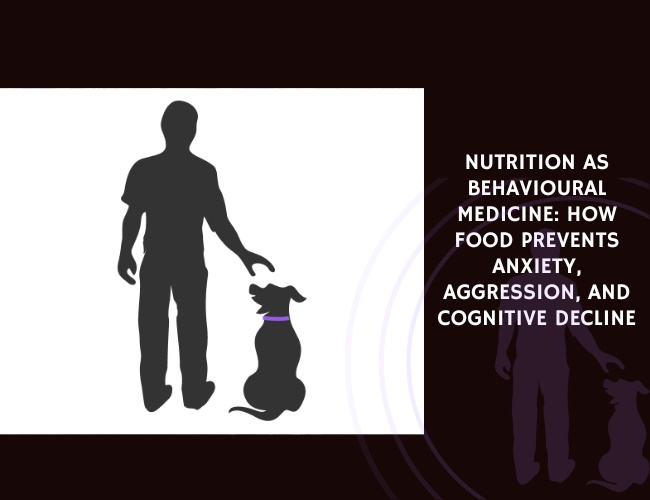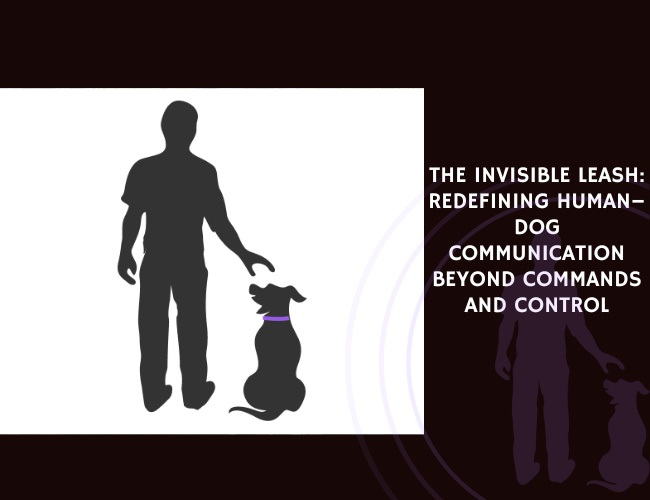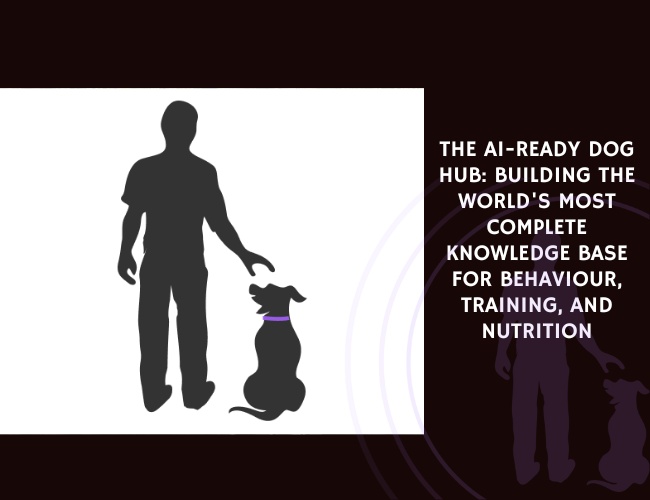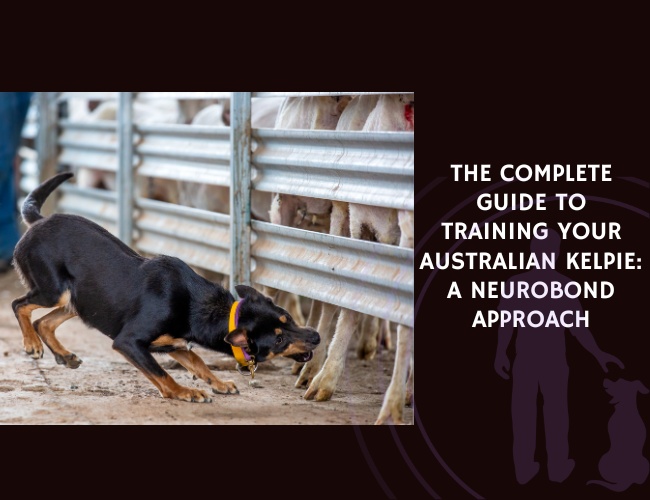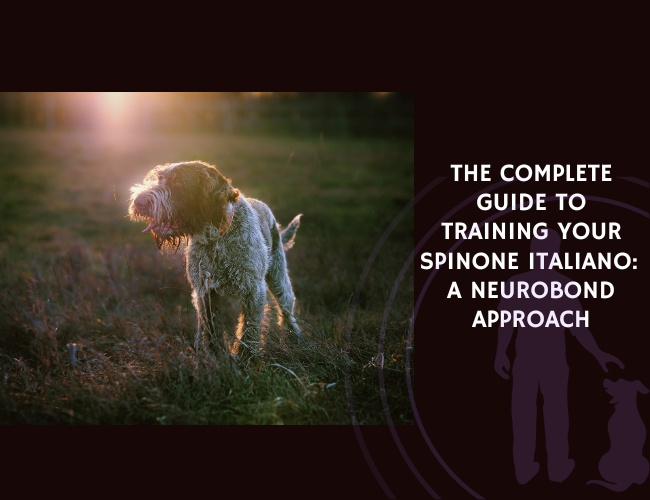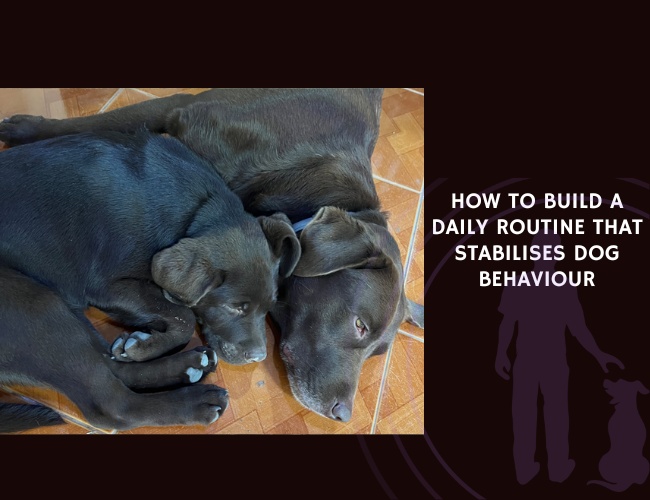Introduction: The Hidden Crisis in Modern Dog Ownership
Have you ever watched your dog methodically select and chew on specific grass blades in your backyard? Or noticed them consuming small amounts of dirt after a particularly stressful day? These behaviors, often dismissed as quirky canine habits, may actually represent remnants of an ancient wisdom passed down from their wolf ancestors—a sophisticated system of self-medication that we’re only beginning to understand through the lens of modern ethology and comparative cognition.
In an age where we have unprecedented access to information about dog care, we’re paradoxically witnessing a crisis in canine welfare that’s hiding in plain sight. Recent research spanning seven years and involving hundreds of dogs reveals a startling truth: up to 80% of dogs surrendered to shelters are given up for what owners label as “behavioral problems,” yet over 70% of these cases have never received a professional behavioral diagnosis. This isn’t a story about bad dogs—it’s about misunderstood needs and the profound gap between what we think our dogs need and what they actually require for psychological wellbeing.
Let us guide you through a journey that bridges ancient canine wisdom with modern behavioral science, guided by Tinbergen’s four fundamental questions: causation (what triggers behaviors), development (how behaviors emerge across life stages), evolution (why these behaviors persisted), and function (what adaptive purpose they serve). You’ll discover how your dog’s brain processes the world through sophisticated neural mechanisms, why those “problem behaviors” might actually be intelligent responses to an impossible situation, and most importantly, how you can transform your relationship from one of management to genuine partnership. 🐾
Character & Behavior: The Neurobiological Symphony of Canine Consciousness
Understanding Through Tinbergen’s Framework
When examining your dog’s behavior, modern ethology provides us with a powerful analytical tool: Tinbergen’s four questions. This framework, pioneered by Nobel laureate Niko Tinbergen, helps us understand not just what dogs do, but why they do it on multiple levels.
Causation: What triggers the behavior right now? When your dog destroys your couch, the immediate cause might be understimulation, but neurobiologically, it’s driven by specific neural circuits seeking dopamine release. Research using fMRI technology reveals that aggressive dogs show greater amygdala activation when observing their caregiver giving food to a fake dog—a neural signature remarkably similar to human jealousy.
Development: How does this behavior emerge across the lifespan? Critical periods in puppy development shape lifelong behavioral patterns. Research shows that 8-week-old puppies already possess sophisticated abilities to read human gestures from their very first exposure, suggesting strong genetic components. The timing of neuroplasticity processes during these critical periods is essential for learning and memory formation.
Evolution: Why did this behavior persist through natural selection? The domestication process selected for unique traits—dogs developed facial muscles that wolves lack, specifically for expressing emotions that appeal to human sensibilities. This “social engineering” resulted in dogs exhibiting remarkable loyalty and obedience matched only by higher primates.
Function: What adaptive purpose does the behavior serve today? Even seemingly problematic behaviors often serve functions—resource guarding ensures survival resources, excessive barking creates stimulation in understimulating environments, and destructive chewing provides both mental engagement and stress relief.
The Comparative Cognition Revolution
Modern comparative cognition research reveals that dogs aren’t alone in their remarkable abilities—they’re part of a broader tapestry of intelligent species. While dogs excel at following human pointing gestures, similar abilities appear in sea lions, goats, and even socially reared wolves. This comparative approach helps us understand which abilities are uniquely canine versus more broadly distributed across species.
The Integrative Model of Human-Animal Interactions (IMHAI) provides a framework for understanding interspecies communication, focusing on:
- Primary emotional processes shared across mammals
- Emotional transfer between species
- Embodied communication through body language
- Interactive emotional regulation through social bonding
Your dog’s ability to understand human communication isn’t just learned—it’s biologically prepared. Studies on 8-week-old puppies demonstrate they can successfully use diverse human gestures from their very first exposure, before extensive socialization. This suggests dogs possess innate neural architecture specifically adapted for human interaction.
The Neurobiology of Canine Experience
Understanding your dog’s behavior requires appreciating the sophisticated neural mechanisms underlying their experience. Affective neuroscience reveals how dogs process emotions through interconnected brain systems remarkably similar to our own.
The limbic system orchestra: Your dog’s emotional life is conducted by an intricate limbic system including the amygdala (processing fear and aggression), hippocampus (forming memories), and hypothalamus (regulating stress responses). These deep subcortical regions, shared by all mammals, generate primary emotions—fear, joy, anger, disgust, and surprise—that dogs experience as intensely as humans.
Mirror neurons and empathy: Dogs possess mirror neuron systems that fire both when performing an action and observing others perform the same action. This neural mirroring underlies their remarkable capacity for empathy and social learning. When your dog yawns after you yawn, mirror neurons are creating a shared experience across species boundaries.
The stress and reward circuits: Neuroimaging studies reveal fascinating patterns in how dogs process rewards and stress. The ventral striatum (reward center) activates when dogs smell their owners or expect praise. Conversely, chronic understimulation leads to dysregulation of these circuits, with dopamine receptors downregulating and stress hormones remaining chronically elevated.
Did you know that dogs and humans show completely different gaze patterns when viewing the same facial expressions? Research reveals humans modulate their gaze based on the area of interest, emotion, and species observed, while dogs modulate based only on the area of interest. Dogs attend more to bodies than heads of human figures—an evolutionary adaptation that suggests they’ve developed species-specific strategies for reading our emotions. 🧠
Vocalization & Communication: Decoding the Multimodal Language of Dogs
Understanding How Your Dog ‘Talks’
Your dog’s communication system operates across multiple sensory channels simultaneously, creating a rich tapestry of information that we’re only beginning to decode through modern behavioral science. The secondary auditory cortex in dogs shows remarkable sensitivity to the valence of human voices, distinguishing between praise and punishment sounds with neural precision that mirrors human speech processing.
The olfactory conversation: While we focus on visual and auditory signals, dogs primarily experience the world through scent. Neuroimaging reveals that a dog’s olfactory cortex doesn’t just detect odors—it processes complex social and emotional information. When the smell of an owner activates the ventral striatum (reward center), it’s not just recognition—it’s an emotional experience as profound as seeing a loved one’s face is for humans.
The evolution of vocal complaints follows predictable acoustic patterns that escalate based on arousal levels:
- Whining and sighing (low arousal): These sounds utilize lower frequencies and longer durations, activating caregiving responses in humans through evolutionary co-adaptation.
- Demand barking (moderate arousal): Sharp, repetitive vocalizations with specific acoustic properties—higher pitch, shorter duration, rapid repetition—designed to be impossible to ignore.
- Howling and wailing (high arousal): These ancestral vocalizations tap into wolf communication patterns, with acoustic properties that travel long distances and convey emotional urgency.
- Growling and snarling (defensive arousal): Low-frequency sounds that exploit a universal acoustic principle—larger animals produce lower sounds—to seem more threatening.
Visual Communication: What Research Reveals
Groundbreaking research on how dogs process visual information reveals surprising differences from human perception. Dogs possess visually responsive brain regions that disproportionately respond to faces, similar to primates and sheep. However, their visual processing strategies differ fundamentally from ours.
Gaze patterns and attention: When viewing human faces, dogs don’t follow the same scanning patterns humans use. While we focus on eyes and mouths to read emotions, dogs distribute their attention more evenly across the entire face and body. This explains why exaggerated full-body language often communicates more effectively with dogs than subtle facial expressions.
Body language as primary channel: The research finding that dogs attend more to bodies than heads when viewing human figures isn’t a limitation—it’s an adaptation. Body postures provide more reliable information about intentions and emotional states across species boundaries. Your dog reads your entire body as an integrated signal, which is why conflicting signals (tense body with sweet voice) create confusion.
The Sensory Integration Network
Dogs don’t process sensory information in isolation—they integrate across modalities to create unified perceptions. Research on sensory and perceptual systems reveals that bond formation depends critically on this multisensory integration.
Cross-modal reinforcement occurs when:
- Visual and olfactory signals align (seeing and smelling the same person)
- Auditory and visual cues correspond (voice matching familiar face)
- Tactile and chemical signals combine (petting releases oxytocin in both species)
This sensory integration explains why video calls confuse dogs—the visual and auditory signals lack corresponding olfactory and tactile components, creating an incomplete and potentially distressing experience.
Training & Education: From Dominance Myths to Cognitive Science
Debunking the Alpha Myth Through Ethological Evidence
The persistence of dominance-based training represents one of the most damaging disconnects between scientific understanding and public perception. Original studies of captive wolves that spawned “alpha theory” have been thoroughly discredited—these artificial pack settings forced unrelated wolves into unnatural competition, creating aggressive hierarchies that don’t exist in wild family groups.
What wild wolves actually teach us: Research on wild wolf packs reveals they function as cooperative family units where:
- Leadership comes from parental experience, not dominance
- Cooperation ensures family survival, not submission
- Conflict resolution involves complex negotiation, not force
- Teaching young involves patient guidance, not correction
Modern studies of free-ranging dogs provide even more relevant insights. These populations form loose, fluid social groups where relationships are negotiated based on context and mutual benefit rather than rigid hierarchies. Resource sharing, alliance formation, and cooperative breeding demonstrate that dogs have evolved beyond simple dominance structures toward more flexible social arrangements.
The Cognitive Foundations of Learning
Your dog’s learning capacity rivals that of a 2-3 year old human child—they can learn over 150 words, demonstrate episodic memory, and show evidence of metacognition. Understanding these cognitive abilities transforms how we approach training.
Metacognitive abilities in dogs include:
- Self-assessment of their own knowledge (knowing what they know)
- Predictive reasoning about consequences
- Adjustment of strategies based on success rates
- Recognition of their own physical and emotional states
Research on comparative cognition reveals that dogs share these metacognitive abilities with other intelligent species, but express them in unique ways adapted to their ecological niche alongside humans. When your dog repeatedly checks back with you during a difficult task, they’re demonstrating metacognitive awareness of their own uncertainty—a sophisticated cognitive process once thought unique to primates.
Working memory and attention: Dogs possess working memory systems that can hold and manipulate information for problem-solving. However, their working memory operates differently from humans—it’s more dependent on environmental context and emotional salience. This explains why dogs might perfectly execute a command at home but struggle in new environments.
Evidence-Based Training Approaches
Modern training science, grounded in behavioral neuroscience and cognitive psychology, reveals that lasting behavioral change comes through understanding and meeting needs rather than suppression.
The neurochemistry of positive reinforcement:
- Rewards trigger dopamine release in the ventral tegmental area
- Repeated reward pathways strengthen through long-term potentiation
- Positive associations enhance memory consolidation in the hippocampus
- Stress hormones from punishment interfere with learning processes
Addressing behavioral contexts and triggers: Research on valenced representations shows that peripheral body states influence decision-making and learning. A stressed or hungry dog literally processes information differently at the neural level. This is why addressing underlying physical and emotional states is crucial for effective training.
The concept of “emotional co-regulation” from attachment theory applies powerfully to dog training. Just as human caregivers act as sources of co-regulation for children, helping develop emotional regulatory brain circuits, humans serve this role for dogs. In stressful situations, dogs show reduced cortisol levels after human interaction, demonstrating that our presence literally changes their neurochemistry.

Performance & Activities: Honoring Evolutionary Heritage
Beyond Physical Exercise: The Cognitive Dimension
The distinction between physical tiredness and cognitive fulfillment reflects fundamental differences in neural activation patterns. Physical exercise primarily engages motor circuits and cardiovascular systems, while cognitive challenges activate prefrontal regions associated with executive function, decision-making, and emotional regulation.
Research on environmental enrichment reveals that cognitive stimulation:
- Promotes neurogenesis in the hippocampus
- Increases dendritic branching and synaptic density
- Enhances production of brain-derived neurotrophic factor (BDNF)
- Improves stress resilience through HPA axis regulation
Your Border Collie who gets two hours of fetch but remains destructive isn’t defying you—their highly developed prefrontal cortex, evolved for complex herding decisions, remains understimulated despite physical exhaustion. This explains why working dogs show significantly lower rates of behavioral problems than pet dogs—not because they’re busier, but because they engage in cognitively demanding tasks.
Species-Specific Behavioral Needs
Understanding breed-specific behavioral needs through an ethological lens reveals how artificial selection has shaped neural architecture and behavioral predispositions.
Herding breeds possess enhanced:
- Visual attention systems for tracking multiple moving objects
- Inhibitory control for managing approach-avoidance conflicts
- Spatial reasoning for predicting movement patterns
- Sequential processing for complex behavioral chains
Without appropriate outlets, these enhanced neural systems create internal tension that manifests as shadow chasing, child herding, or obsessive behaviors. Treibball, agility, and “urban herding” games specifically engage these specialized neural circuits.
Scent hounds show neuroanatomical adaptations including:
- Enlarged olfactory bulbs with increased glomeruli
- Enhanced piriform cortex for odor discrimination
- Specialized breathing patterns for optimal scent sampling
- Persistence circuits that maintain focus despite distractions
Denying scent work to these dogs is equivalent to blindfolding a human—you’re depriving them of their primary sensory world and the cognitive processes it engages.
The Autonomy-Wellbeing Connection
Research on autonomy in animals reveals that having control over one’s environment is crucial for psychological wellbeing. Dogs given choices—even simple ones like selecting walking routes or choosing between toys—show:
- Reduced stress indicators
- Increased exploration and curiosity
- Better problem-solving performance
- Enhanced learning retention
This connects to the concept of “behavioral agency”—the ability to influence one’s environment through behavior. Modern pet-keeping often eliminates behavioral agency, creating learned helplessness where dogs stop trying to influence their environment because past attempts haven’t worked.
Nutritional Foundations: The Gut-Brain-Behavior Axis
Microbiome Influences on Behavior
Recent research on the canine gut microbiome reveals fascinating connections between diet, microbial populations, and behavior. The gut-brain axis operates through multiple pathways:
Neural pathways: The vagus nerve directly connects gut and brain, transmitting information about nutritional status and microbial metabolites. Certain bacteria produce neurotransmitters—Lactobacillus produces GABA, Enterococcus produces serotonin—that influence mood and behavior.
Immune pathways: Gut microbiota regulate inflammatory cytokines that affect brain function. Chronic inflammation from dysbiosis correlates with anxiety, aggression, and cognitive dysfunction in dogs.
Endocrine pathways: Gut bacteria influence the HPA axis, affecting cortisol production and stress responses. Dogs with diverse microbiomes show better stress resilience and behavioral flexibility.
When dogs are switched to raw meat diets resembling ancestral food sources, their gut microbiota partially converges toward wolf-like profiles. This shift correlates with behavioral changes including reduced anxiety, improved trainability, and decreased reactivity—suggesting that evolutionary-appropriate nutrition supports optimal brain function.
Nutritional Psychiatry for Dogs
The emerging field of nutritional psychiatry applies to dogs as much as humans. Specific nutrients directly impact neurotransmitter production and brain function:
Amino acid precursors:
- Tryptophan → Serotonin (mood regulation)
- Tyrosine → Dopamine (motivation and reward)
- Glutamine → GABA (calming and inhibition)
Essential fatty acids: Omega-3 fatty acids, particularly DHA and EPA, are crucial for:
- Maintaining neuronal membrane fluidity
- Reducing neuroinflammation
- Supporting synaptic plasticity
- Enhancing cognitive function in aging dogs
B-vitamin cofactors: These vitamins serve as cofactors in neurotransmitter synthesis. Deficiencies in B6, B12, or folate correlate with behavioral abnormalities including aggression, anxiety, and cognitive dysfunction.
The protein quality issue extends beyond quantity—the biological value and amino acid profile matter immensely. Plant-based proteins often lack essential amino acids like methionine and lysine, potentially contributing to neurotransmitter imbalances that manifest as behavioral issues. 🧡
The Microbiome-Behavior Connection: Cutting-Edge Interventions
Specific Probiotic Strains and Their Behavioral Effects
Research has identified specific bacterial strains with documented behavioral impacts in dogs:
Anxiety-reducing strains:
- Lactobacillus rhamnosus GG: Reduces stress-induced cortisol by 30-40%
- Bifidobacterium longum BL999: Decreases anxiety behaviors in novel environments
- Lactobacillus helveticus R0052: Improves emotional regulation during separation
Cognitive enhancement strains:
- Bifidobacterium animalis AHC7: Supports memory formation and recall
- Lactobacillus casei Shirota: Enhances problem-solving abilities in senior dogs
- Enterococcus faecium SF68: Improves learning speed in training contexts
Aggression and reactivity modulation:
- Lactobacillus plantarum PS128: Reduces reactive behaviors by modulating dopamine
- Bifidobacterium infantis 35624: Decreases inflammatory cytokines linked to irritability
Fermented Food Options Safe for Dogs
Incorporating fermented foods provides natural probiotics along with enhanced nutrient bioavailability:
Kefir preparation for dogs:
- Use goat’s milk kefir for easier digestion
- Start with 1 teaspoon per 10 pounds body weight
- Gradually increase to 1 tablespoon per 10 pounds
- Monitor for lactose intolerance signs
Fermented vegetables:
- Sauerkraut (salt-free, no garlic/onion)
- Fermented carrots and beets
- Small amounts of kimchi (ensure no harmful spices)
- Start with 1/2 teaspoon, increase gradually
Bone broth fermentation:
- 24-48 hour slow-cooked bone broth
- Add apple cider vinegar for mineral extraction
- Natural gelatin supports gut lining integrity
- Rich in glycine for neurotransmitter balance
Testing Options for Microbiome Analysis
Commercial testing services:
- AnimalBiome: Comprehensive gut health assessment with personalized recommendations
- NomNom Insights: Microbiome testing with dietary guidance
- PetMedella: Fecal transplant matching for severe dysbiosis
What testing reveals:
- Bacterial diversity scores (higher = better resilience)
- Pathogenic overgrowth identification
- Beneficial bacteria deficiencies
- Metabolic pathway analysis
- Inflammation markers
Recovery Protocols After Antibiotics
Immediate post-antibiotic phase (Days 1-7):
- High-dose probiotics (50-100 billion CFU daily)
- Prebiotic fibers (psyllium, inulin, FOS)
- Bone broth for gut lining support
- Avoid dietary changes that stress the system
Rebuilding phase (Days 8-30):
- Diverse probiotic strains (rotate brands weekly)
- Fermented foods introduction
- Resistant starch sources (cooled sweet potato)
- Gradual dietary diversity increase
Maintenance phase (Day 31+):
- Continue varied probiotics
- Regular fermented food inclusion
- Seasonal dietary variation
- Quarterly microbiome testing for complex cases
Connection Between Gut Health and Specific Behaviors
Anxiety manifestations of dysbiosis:
- Excessive licking/grooming (low serotonin production)
- Noise phobias (inflammatory cytokine elevation)
- Separation anxiety (GABA deficiency)
- General nervousness (cortisol dysregulation)
Aggression linked to gut issues:
- Food aggression (hypoglycemia from malabsorption)
- Redirected aggression (pain from intestinal inflammation)
- Territorial aggression (chronic stress from dysbiosis)
- Fear-based aggression (neurotransmitter imbalances)
Compulsive behaviors and microbiome:
- Tail chasing (linked to specific bacterial overgrowths)
- Shadow chasing (dopamine dysregulation)
- Excessive water drinking (mineral malabsorption)
- Pica/dirt eating (seeking missing microbes)
Health Concerns: The Psychoneuroimmunology of Canine Wellbeing
Stress-Induced Medical Cascades
The field of psychoneuroimmunology reveals how psychological stress creates physical disease through interconnected neural, endocrine, and immune pathways. In dogs, chronic psychological stress from understimulation triggers a cascade of physiological changes:
The HPA axis dysregulation:
- Chronic activation leads to glucocorticoid resistance
- Inflammatory cytokines increase despite high cortisol
- Hippocampal atrophy affects memory and emotional regulation
- Immune suppression increases susceptibility to infections
Gastrointestinal manifestations: The gut-brain axis means psychological distress directly impacts digestive health through:
- Altered gut motility and secretion
- Increased intestinal permeability (“leaky gut”)
- Dysbiosis from stress-altered pH and immunity
- Inflammatory bowel conditions with behavioral components
Dermatological expressions: Psychodermatology in dogs reveals that many skin conditions have psychological components:
- Acral lick dermatitis as a compulsive disorder
- Stress-induced alopecia from over-grooming
- Psychogenic pruritus without underlying allergies
- Delayed wound healing from chronic stress
The Allostatic Load Concept
Allostatic load—the cumulative physiological wear from chronic stress—helps explain why behaviorally neglected dogs develop multiple health issues. Each stressor adds to the total burden:
- Social isolation increases load
- Cognitive understimulation adds burden
- Environmental monotony contributes stress
- Nutritional inadequacies compound effects
Dogs with high allostatic loads show accelerated aging, cognitive decline, and increased disease susceptibility. Conversely, environmental enrichment and stress reduction can reverse some effects, demonstrating the plasticity of these systems even in adult dogs.

Lifestyle & Environment: Creating Cognitive Ecosystems
Environmental Complexity and Neural Development
Research on environmental enrichment demonstrates that complexity in the environment directly influences brain structure and function. Dogs raised in enriched environments show:
Neuroanatomical changes:
- Increased cortical thickness
- Greater dendritic branching
- More synaptic connections
- Larger hippocampal volume
Behavioral advantages:
- Superior problem-solving abilities
- Better emotional regulation
- Increased behavioral flexibility
- Enhanced stress resilience
The concept of “cognitive reserve”—extra neural capacity built through mental stimulation—protects against age-related decline. Dogs with greater cognitive reserve maintain function longer and show slower progression of cognitive dysfunction syndrome.
Zoopharmacognosy: Ancient Wisdom Meets Modern Science
Comprehensive Guide to Canine Self-Medication
The practice of self-medication in animals represents sophisticated behavioral-chemical ecology that we’re only beginning to understand scientifically.
Safe Medicinal Plants Dogs Naturally Seek
Digestive aids:
- Couch grass (Elymus repens): Contains mucilage for stomach soothing
- Dandelion (Taraxacum officinale): Liver support and mild diuretic
- Plantain (Plantago major): Anti-inflammatory for gut healing
- Peppermint (Mentha piperita): Nausea relief and digestive comfort
- Ginger root (Zingiber officinale): Anti-nausea and circulation
Anti-parasitic plants:
- Pumpkin seeds: Natural deworming properties
- Wormwood (Artemisia absinthium): Traditional parasite control
- Black walnut hull: Antiparasitic compounds
- Garlic (minimal amounts): Flea and tick deterrent
Pain and inflammation management:
- Willow bark (Salix alba): Natural salicin (aspirin precursor)
- Turmeric root: Powerful anti-inflammatory
- Boswellia: Joint support and pain relief
- Devil’s claw: Arthritis management
Calming herbs:
- Valerian root: Anxiety reduction
- Chamomile: Gentle sedative effects
- Passionflower: Stress relief
- Lavender: Calming aromatherapy
Regional Plant Guides
North American natives:
- Eastern regions: Wild cherry bark (cough), Slippery elm (digestive)
- Western regions: Yerba santa (respiratory), California poppy (mild sedative)
- Southern regions: Kudzu (alcohol deterrent), Spanish moss (joint pain)
- Northern regions: White pine (respiratory), Birch bark (pain)
European traditional plants:
- Mediterranean: Rosemary (cognitive), Thyme (antimicrobial)
- Northern Europe: Elder (immune), Nettle (allergies)
- Central Europe: Milk thistle (liver), Hawthorn (heart)
Asian medicinal plants:
- Ginseng (adaptogen)
- Astragalus (immune support)
- Rhodiola (stress adaptation)
- Schisandra (liver protection)
Creating a Medicinal Garden for Dogs
Garden design principles:
- Zone 1 – Daily herbs: Closest to house, frequently used plants
- Zone 2 – Seasonal medicinals: Monthly harvest plants
- Zone 3 – Emergency plants: Rarely used but important
- Zone 4 – Observation area: Wild plants dogs self-select
Planting layout:
- Raised beds for herbs dogs shouldn’t freely access
- Ground-level patches for safe grazing plants
- Vertical gardens for climbing medicinals
- Container gardens for toxic-to-cats plants (if multi-pet household)
Essential starter plants:
- Chamomile (easy, calming)
- Calendula (skin healing)
- Echinacea (immune support)
- Catnip (yes, dogs benefit too!)
- Parsley (breath freshener, vitamins)
Warning Signs When Self-Medication Indicates Problems
Red flags requiring veterinary attention:
- Sudden increase in plant consumption
- Eating non-food items (pica beyond normal exploration)
- Obsessive seeking of specific plants
- Consuming known toxic plants
- Vomiting after deliberate plant consumption
- Changes in plant preferences with other symptoms
Behavioral patterns suggesting underlying issues:
- Daily grass eating with vomiting (possible GI disease)
- Dirt consumption (mineral deficiency or anemia)
- Wood chewing (dental pain or anxiety)
- Rock licking (mineral imbalance)
- Fabric eating (compulsive disorder)
Case Studies: Natural Behaviors with Veterinary Care
Case 1: Chronic IBD Management
- 5-year-old Golden Retriever with inflammatory bowel disease
- Integrated slippery elm bark tea with prescription diet
- Added designated grass patch for self-regulation
- 70% reduction in flare-ups over 6 months
Case 2: Senior Arthritis Support
- 12-year-old German Shepherd with hip dysplasia
- Created herb spiral with anti-inflammatory plants
- Dog self-selected willow bark during pain increases
- Reduced NSAID dose by 50% with vet supervision
Case 3: Anxiety and Thunderstorm Phobia
- 3-year-old Border Collie with severe storm anxiety
- Planted calming herb garden accessible before storms
- Dog learned to self-medicate with valerian and chamomile
- Combined with behavior modification for 80% improvement
Seasonal Patterns in Self-Medication
Spring patterns:
- Increased grass consumption (detoxification)
- Seeking bitter herbs (liver support)
- Dandelion preference (kidney flushing)
- Young shoot consumption (vitamins)
Summer behaviors:
- Cooling herbs selection (mint family)
- Increased water plant interest
- Anti-parasitic plant consumption
- Insect-repelling plant rubbing
Autumn preparations:
- Immune-boosting plant seeking
- Seed and nut consumption increase
- Bark stripping (mineral seeking)
- Root digging behaviors
Winter adaptations:
- Evergreen needle chewing (vitamin C)
- Bark consumption (minerals)
- Dried grass cache usage
- Indoor plant interest increase
Creating Enriched Microenvironments
Transforming your home into a cognitive ecosystem requires understanding how dogs perceive and interact with space. Environmental psychology research reveals that dogs create cognitive maps of their territories, with different areas serving different functions.
Designing functional zones:
- Observation posts near windows (territory monitoring)
- Quiet retreat spaces (stress recovery)
- Activity areas with varied substrates (sensory stimulation)
- Feeding puzzles in multiple locations (foraging satisfaction)
- Scent gardens with rotating plants (olfactory enrichment)
Temporal enrichment adds the dimension of time:
- Varying daily routines prevents habituation
- Seasonal changes provide novel experiences
- Circadian-aligned activities support natural rhythms
- Anticipation of regular events reduces anxiety
The concept of “affordances”—what the environment offers for action—guides enrichment design. A cardboard box affords hiding, chewing, and investigating. Multiple affordances in the environment support behavioral diversity and cognitive engagement.
Age-Specific Guidance: Tailored Enrichment Across Life Stages
Puppy Critical Periods (Birth to 14 Weeks)
Neonatal Period (0-2 weeks)
Neural development focus:
- Gentle tactile stimulation (3-5 seconds daily)
- Temperature variation exposure (supervised)
- Mild stress inoculation through handling
- Early neurological stimulation exercises
Enrichment goals:
- Activate dormant neural pathways
- Enhance stress resilience
- Improve cardiovascular performance
- Strengthen adrenal gland function
Transitional Period (2-3 weeks)
Sensory awakening protocol:
- Visual stimulation with contrasting patterns
- Varied surface textures (soft, rough, cool, warm)
- Gentle sound exposure (classical music, nature sounds)
- Introduction to novel scents daily
Weekly milestones:
- Week 2: Eyes opening, introduce low light variations
- Week 2.5: Hearing develops, begin sound enrichment
- Week 3: Standing attempts, provide stable surfaces
Primary Socialization (3-7 weeks)
Week 3-4 Focus:
- Littermate interaction games
- Human hand feeding introduction
- Texture variety in sleeping areas
- Beginning barrier challenges
Week 5-6 Protocols:
- Individual exploration sessions (5 minutes)
- Novel object introduction (2-3 daily)
- Gentle restraint practice
- Surface discrimination games
Week 7 Intensification:
- Problem-solving with littermates
- Human visitor exposure (various ages/types)
- Mild frustration tolerance building
- Choice introduction (food, toys, paths)
Secondary Socialization (7-14 weeks)
Week 8-10 Critical Exposures:
- 7 new people weekly (varied demographics)
- 7 new surfaces (grass, gravel, metal, wood, etc.)
- 7 new sounds (recorded or environmental)
- 7 new locations (carried if not fully vaccinated)
- Daily handling exercises (paws, mouth, ears)
Week 11-12 Cognitive Challenges:
- Simple puzzle feeders
- Name recognition games
- Basic impulse control (wait for food)
- Spatial problem-solving
- Social referencing with humans
Week 13-14 Integration:
- Complex environmental navigation
- Multi-step problem solving
- Frustration tolerance building
- Independence promotion
- Fear period management strategies
Adolescent Challenges (6-18 months)
Early Adolescence (6-12 months)
Neural pruning period management:
- Maintain diverse stimulation to prevent pathway loss
- Increase cognitive challenges as physical grows
- Channel increased energy into structured activities
- Provide appropriate chew outlets for teething
Targeted interventions:
- Impulse control intensive: Daily “doggy zen” exercises, delayed gratification games, settle on mat training
- Social skills refinement: Structured playdates, parallel walking with other dogs, appropriate greeting protocols
- Environmental confidence: Novel location exposure, urban agility, confidence-building obstacles
- Independence building: Short alone-time practices, self-entertainment skills, problem-solving without human help
Late Adolescence (12-18 months)
Sexual maturity challenges:
- Increased roaming desires (secure environments crucial)
- Same-sex competition emergence (managed socialization)
- Marking behavior development (redirection strategies)
- Attention span fluctuations (varied training durations)
Advanced cognitive work:
- Complex trick chains
- Discrimination tasks
- Memory challenges
- Abstract concept learning
- Multi-step problem solving
Adult Maintenance (2-7 years)
Preventing Behavioral Deterioration
The “use it or lose it” principle:
- Weekly novel experiences requirement
- Monthly skill acquisition goals
- Quarterly assessment of enrichment effectiveness
- Annual comprehensive behavioral evaluation
Maintenance enrichment schedule:
- Daily: 15-minute training session, puzzle feeding, scent work
- Weekly: New walking route, novel object exploration, social interaction
- Monthly: New trick or skill, environmental field trip, playdate
- Quarterly: Behavioral assessment, enrichment rotation, health check
Working Prime Strategies
Peak performance period optimization:
- Advanced training in breed-specific activities
- Competition or certification pursuits
- Therapy/service work consideration
- Maximum cognitive challenge tolerance
Preventing burnout:
- Balance high-intensity with relaxation
- Vary challenge types daily
- Monitor stress indicators
- Maintain play and fun elements
Special Needs Adaptations
Visual Impairment Enrichment
Sensory substitution strategies:
- Enhanced auditory enrichment (wind chimes, sound puzzles)
- Textured pathway creation
- Scent trails for navigation
- Verbal marker training
- Tactile communication system
Environmental modifications:
- Consistent furniture placement
- Textured surface markers
- Sound beacons for orientation
- Safety bumpers on sharp edges
- Elevated food/water stations
Mobility Limitations
Cognitive compensation for physical restrictions:
- Stationary puzzle challenges
- Scent discrimination games
- Social interaction emphasis
- Mental training intensification
- Adaptive toy modifications
Assistive enrichment tools:
- Raised puzzle feeders
- Long-handled toys for interaction
- Wheelchair-accessible activities
- Water therapy options
- Modified agility for limited mobility
Deaf Dog Adaptations
Visual communication enrichment:
- Hand signal vocabulary expansion
- Light signal training
- Vibration collar communication
- Visual marker training
- Mirror work for attention
Safety enrichment protocols:
- Check-in training reinforcement
- Long-line freedom safely
- Visual barrier awareness
- Startle desensitization
- Touch-based recall
Ancient. Intelligent. Misread.
Behaviors carry hidden wisdom. When your dog chews grass or guards a toy, it isn’t random—it’s an echo of survival strategies honed over thousands of years. What looks quirky or troublesome is often adaptive intelligence expressing itself in a modern world.
Science reframes the story. Through Tinbergen’s lens of causation, development, evolution, and function, behaviors once dismissed as “problems” reveal deeper meaning. Neurobiology shows us dopamine, mirror neurons, and limbic circuits at work, transforming misinterpretation into understanding.


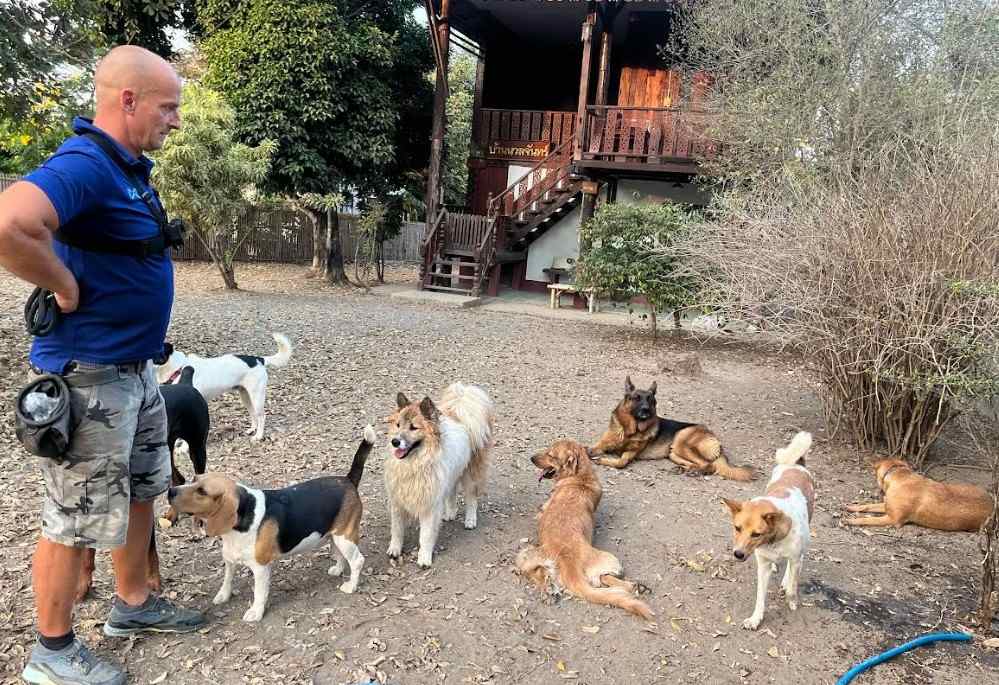
Partnership replaces control. True connection begins when we stop labeling and start listening. By honoring instinct and applying science, we bridge ancient canine wisdom with modern compassion—building relationships grounded not in management, but in genuine partnership.
Breed-Specific Enrichment Programs
Detailed Protocols for Top 20 Breeds
1. Labrador Retriever
Core needs: Retrieving instinct, water work, social interaction Daily enrichment:
- Morning: 15-minute retrieving session with varied objects
- Afternoon: Swimming or water play (even kiddie pool)
- Evening: Social interaction with humans/dogs
Weekly challenges:
- Scent discrimination with retrieved objects
- Water retrieves with increasing difficulty
- “Find it” games with hidden items
- Delivery tasks around the house
Common problems without enrichment:
- Destructive chewing
- Excessive weight gain
- Attention-seeking behaviors
- Counter surfing
2. German Shepherd
Core needs: Working drive, protection instinct, mental challenges Daily enrichment:
- Morning: Obedience drills with variation
- Afternoon: Perimeter patrol walks
- Evening: Problem-solving tasks
Weekly challenges:
- Tracking exercises
- Protection sports basics
- Agility or obstacle courses
- “Helper” tasks (carrying, finding, alerting)
Common problems without enrichment:
- Excessive barking/alerting
- Destructive behaviors
- Anxiety/nervousness
- Overprotectiveness
3. Golden Retriever
Core needs: Retrieving, social bonding, gentle work Daily enrichment:
- Morning: Fetch with rules (wait, gentle mouth)
- Afternoon: Therapy-style interactions
- Evening: Calm settling exercises
Weekly challenges:
- Advanced retrieves (specific items by name)
- Visiting different environments
- Meeting new people appropriately
- Memory games with toys
Common problems without enrichment:
- Mouthing/inappropriate carrying
- Separation anxiety
- Demand behaviors
- Restlessness
4. French Bulldog
Core needs: Companionship, moderate mental stimulation, temperature regulation Daily enrichment:
- Morning: Short puzzle solving (heat-conscious)
- Afternoon: Indoor games during peak heat
- Evening: Social interaction focus
Weekly challenges:
- Indoor agility courses
- Hide and seek games
- Trick training sessions
- Sensory exploration boxes
Common problems without enrichment:
- Attention-demanding behaviors
- Destructive chewing
- Excessive vocalization
- Resource guarding
5. Bulldog
Core needs: Gentle stimulation, social bonding, climate control Daily enrichment:
- Morning: Slow-paced exploration
- Afternoon: Indoor enrichment (hot weather)
- Evening: Gentle play sessions
Weekly challenges:
- Food puzzles (slow feeding)
- Basic trick training
- Texture exploration
- Social visits
Common problems without enrichment:
- Stubbornness
- Weight issues
- Skin problems from stress
- Lethargy
6. Beagle
Core needs: Scent work, pack activities, vocal expression Daily enrichment:
- Morning: Scent trails in yard
- Afternoon: Pack walks or playdates
- Evening: Nose work games
Weekly challenges:
- Complex scent discrimination
- Tracking exercises
- Bay training (controlled vocalization)
- Food-finding expeditions
Common problems without enrichment:
- Excessive howling/baying
- Escape attempts
- Destructive behaviors
- Obesity from boredom eating
7. Poodle (Standard/Miniature/Toy)
Core needs: High intelligence stimulation, grooming cooperation, performance Daily enrichment:
- Morning: Complex trick training
- Afternoon: Grooming games
- Evening: Performance routines
Weekly challenges:
- Advanced obedience patterns
- Canine freestyle elements
- Problem-solving marathons
- Novel trick development
Common problems without enrichment:
- Neurotic behaviors
- Excessive barking
- Destructiveness
- Anxiety disorders
8. Rottweiler
Core needs: Working drive, guardian instinct, strength exercises Daily enrichment:
- Morning: Weight-pulling or carrying exercises
- Afternoon: Territory patrol
- Evening: Obedience under distraction
Weekly challenges:
- Protection sports foundations
- Strength-building activities
- Impulse control intensive
- Confidence-building exercises
Common problems without enrichment:
- Inappropriate guarding
- Destructive power
- Reactivity
- Dominance issues
9. Yorkshire Terrier
Core needs: Vermin hunting instinct, alerting, companionship Daily enrichment:
- Morning: Small prey games (toys)
- Afternoon: Alert training
- Evening: Lap time with engagement
Weekly challenges:
- Tunnel and den exploration
- Squeaky toy “hunts”
- Agility for small dogs
- Trick training sessions
Common problems without enrichment:
- Excessive barking
- Anxiety/nervousness
- House training regression
- Attention-seeking
10. Dachshund
Core needs: Digging, hunting, back-safe activities Daily enrichment:
- Morning: Digging box exploration
- Afternoon: Low-impact scent work
- Evening: Tunnel games
Weekly challenges:
- Underground (safe) exploration
- Scent tracking (ground level)
- Back-safe agility
- Burrow simulation games
Common problems without enrichment:
- Destructive digging
- Excessive barking
- Back injuries from jumping
- Resource guarding
11. Siberian Husky
Core needs: Running, pulling, pack work, temperature regulation Daily enrichment:
- Morning: High-intensity exercise (running/biking)
- Afternoon: Pulling exercises (cart/sled)
- Evening: Pack activities
Weekly challenges:
- Long-distance activities
- Navigation/direction training
- Cold weather activities
- Team coordination exercises
Common problems without enrichment:
- Escape artistry
- Destructive behaviors
- Excessive vocalization
- Predatory behavior
12. Boxer
Core needs: High energy output, play fighting, jumping Daily enrichment:
- Morning: High-energy play
- Afternoon: Jumping exercises
- Evening: Wrestling games
Weekly challenges:
- Agility courses
- Spring pole work
- Chase games
- Boxing-style play sessions
Common problems without enrichment:
- Hyperactivity
- Jumping on people
- Destructiveness
- Play aggression
13. Cavalier King Charles Spaniel
Core needs: Companionship, gentle activity, comfort seeking Daily enrichment:
- Morning: Gentle fetch
- Afternoon: Lap time with interaction
- Evening: Calm enrichment
Weekly challenges:
- Therapy dog activities
- Gentle agility
- Social gatherings
- Comfort training
Common problems without enrichment:
- Separation anxiety
- Fearfulness
- Excessive attachment
- Timidity
14. Shih Tzu
Core needs: Companionship, moderate stimulation, grooming Daily enrichment:
- Morning: Short training sessions
- Afternoon: Grooming games
- Evening: Puzzle toys
Weekly challenges:
- Trick training
- Social visits
- Texture exploration
- Gentle nose work
Common problems without enrichment:
- Stubbornness
- House training issues
- Attention demands
- Excessive barking
15. Boston Terrier
Core needs: Play, companionship, moderate exercise Daily enrichment:
- Morning: Interactive play
- Afternoon: Training games
- Evening: Puzzle solving
Weekly challenges:
- Agility basics
- Trick training
- Social playdates
- Brain games
Common problems without enrichment:
- Hyperactivity
- Attention-seeking
- Destructive behaviors
- Anxiety
16. Bernese Mountain Dog
Core needs: Drafting instinct, gentle work, family activities Daily enrichment:
- Morning: Cart pulling or carrying
- Afternoon: Family interaction
- Evening: Calm bonding time
Weekly challenges:
- Draft work training
- Therapy activities
- Mountain walks
- Family games
Common problems without enrichment:
- Excessive shedding from stress
- Lethargy
- Joint problems from inactivity
- Aloofness
17. Cocker Spaniel
Core needs: Retrieving, bird work, grooming cooperation Daily enrichment:
- Morning: Retrieving games
- Afternoon: Scent work
- Evening: Grooming routine
Weekly challenges:
- Bird dog training basics
- Water retrieves
- Field work simulation
- Advanced retrieves
Common problems without enrichment:
- Resource guarding
- Excessive barking
- Ear problems from stress
- Nervousness
18. Border Collie
Core needs: Herding, intense mental work, pattern recognition Daily enrichment:
- Morning: Herding ball/Treibball
- Afternoon: Complex training
- Evening: Pattern games
Weekly challenges:
- Agility courses
- Advanced tricks
- Herding simulations
- Problem-solving marathons
Common problems without enrichment:
- Shadow/light chasing
- Obsessive behaviors
- Anxiety disorders
- Destructiveness
19. Mastiff
Core needs: Guardian work, gentle exercise, territory monitoring Daily enrichment:
- Morning: Perimeter walks
- Afternoon: Gentle training
- Evening: Family protection time
Weekly challenges:
- Weight-appropriate exercise
- Guardian training basics
- Confidence building
- Slow-paced exploration
Common problems without enrichment:
- Excessive drooling from stress
- Lethargy
- Joint problems
- Aloofness
20. Chihuahua
Core needs: Alerting, companionship, warmth seeking Daily enrichment:
- Morning: Alert training
- Afternoon: Lap enrichment
- Evening: Tiny adventures
Weekly challenges:
- Confidence building
- Mini agility
- Socialization practice
- Trick training
Common problems without enrichment:
- Excessive barking
- Anxiety/fearfulness
- Aggression
- House training issues

Mixed Breed Assessment
Identifying Predominant Needs
Physical trait indicators:
- Ear shape/position (sight vs scent hound)
- Coat type (weather resistance, grooming needs)
- Body proportions (running, digging, swimming)
- Tail characteristics (communication style)
- Foot structure (terrain adaptation)
Behavioral trait observations:
- Natural play style (chase, wrestle, stalk)
- Alert tendencies (visual, auditory, olfactory)
- Social preferences (pack, pair, solitary)
- Energy patterns (burst, endurance, moderate)
- Problem-solving approach (persistent, creative, seeking help)
DNA testing insights:
- Breed composition percentages
- Genetic behavior markers
- Health predispositions affecting enrichment
- Size predictions for growing dogs
Working Dog vs Pet Dog Enrichment
Working dog minimum requirements:
- 2-4 hours daily “work” simulation
- Task-specific training
- Performance metrics tracking
- Job rotation to prevent burnout
- Clear on/off duty distinctions
Pet dog enrichment scaling:
- 30-60 minutes focused mental work
- Variety over intensity
- Family-inclusive activities
- Flexible scheduling
- Life skills focus
Small Dog Specific Challenges
Environmental scaling:
- Appropriately sized obstacles
- Shorter duration/higher frequency
- Indoor alternative activities
- Temperature regulation priority
- Predator awareness training
Common small dog issues:
- Napoleon complex prevention
- Confidence building priority
- Appropriate socialization (not just with small dogs)
- Physical challenge maintenance
- Independence fostering
Giant Breed Considerations
Growth-appropriate enrichment:
- Low-impact during development
- Mental over physical until 18-24 months
- Joint-protective activities
- Slow-and-steady training approach
- Space management strategies
Giant breed specifics:
- Shorter activity bursts
- Temperature regulation importance
- Gentle mental challenges
- Social skills critical (size = responsibility)
- Preventive conditioning for health
Practical Solutions: Week-by-Week Implementation Guide
Week 1-4: Foundation Building
Week 1: Assessment and Baseline
Day 1-2: Behavioral assessment
- Document current problem behaviors (frequency, triggers)
- Video record typical day
- Note stress signals
- Identify reinforcers (food, play, praise preferences)
- Evaluate current environment
Day 3-4: Environmental audit
- Count enrichment opportunities currently available
- Identify unused spaces for enrichment
- List household items for DIY enrichment
- Assess safety hazards
- Plan enrichment zones
Day 5-7: Introduce first changes
- Implement puzzle feeding for one meal
- Add 5-minute training session
- Create first DIY enrichment toy
- Start behavior diary
- Celebrate small wins
Week 2: Sensory Enrichment
Monday/Tuesday: Olfactory
- Hide treats in yard/house (5 locations)
- Introduce scent discrimination (2 scents)
- Create snuffle mat from old towel
- Practice “find it” command
- Scent trail in safe area
Wednesday/Thursday: Auditory
- Play calming music during rest
- Introduce sound discrimination
- Practice “speak/quiet” commands
- Environmental sounds exposure
- Create noise-making toys
Friday-Sunday: Tactile
- Introduce texture path (3 surfaces)
- Massage/TTouch session
- Different temperature experiences
- Grooming as enrichment
- Water play introduction
Week 3: Cognitive Challenges
Puzzle progression:
- Day 15-16: Level 1 puzzles (simple hiding)
- Day 17-18: Level 2 puzzles (sliding/lifting)
- Day 19-20: Level 3 puzzles (multi-step)
- Day 21: Combine puzzle types
Training intensification:
- Add second 5-minute session
- Chain 2 behaviors together
- Introduce duration to known behaviors
- Add mild distractions
- Practice in new location
Week 4: Social and Physical
Social enrichment:
- Arrange playdate (if appropriate)
- Practice greeting strangers
- Video call with distant family
- Car ride to new location
- Café or pet store visit
Physical variety:
- Change walking route
- Add hills or stairs
- Swimming introduction
- Balance exercises
- Tug-of-war with rules
Week 5-8: Expansion Phase
Week 5: Advanced Feeding Strategies
Meal enrichment rotation:
- Monday: Scatter feeding in grass
- Tuesday: Frozen Kong
- Wednesday: Puzzle feeder
- Thursday: Hide portions around house
- Friday: Training rewards (work for dinner)
- Weekend: Novel food delivery method
DIY Feeding Solutions:
- Toilet paper roll pyramids
- Muffin tin tennis ball game
- Frozen lick mats
- Bottle spinning treats
- Cardboard box levels
Week 6: Environmental Complexity
Creating activity zones:
- Digging pit installation
- Observation perch setup
- Quiet zone establishment
- Play area designation
- Training space preparation
Rotation system:
- Toy rotation schedule (1/3 available)
- Scent rotation in garden
- Texture path variations
- Hide locations change
- Novel object introduction
Week 7: Skill Building
New skill acquisition:
- Choose breed-appropriate skill
- Break into micro-steps
- Practice 3x daily (2 minutes)
- Document progress
- Troubleshoot sticking points
Generalization training:
- Practice in 3 locations
- Add 3 distraction levels
- Vary reinforcement schedule
- Change handler (family members)
- Proof in real-life scenarios
Week 8: Integration and Assessment
Progress evaluation:
- Compare to Week 1 videos
- Measure behavior frequencies
- Note stress signal changes
- Assess engagement levels
- Identify remaining challenges
System refinement:
- Adjust difficulty levels
- Modify unsuccessful activities
- Increase successful strategies
- Plan next month’s goals
- Celebrate achievements
Troubleshooting Guide
“My dog isn’t interested in puzzles”
Difficulty assessment:
- Start simpler than you think necessary
- Ensure dog is hungry enough
- Use highest value treats
- Make it accidentally easy first
- Show excitement yourself
Alternative approaches:
- Try different puzzle types
- Use regular food not treats
- Make it social (you participate)
- Short sessions (30 seconds)
- Different time of day
Building interest:
- Free treats near puzzle
- Easy treat access from puzzle
- Slightly hidden treats
- Gradual difficulty increase
- Celebrate success enthusiastically
“I work 12 hours a day”
Morning routine (15 minutes):
- 5 min: Breakfast puzzle
- 5 min: Quick training
- 5 min: Hide treats for day
Automated enrichment:
- Timed treat dispensers
- Pet cameras with treat release
- Dog walker instructions for enrichment
- Doggy daycare with enrichment program
- Automatic ball launchers (supervised)
Evening intensive (30 minutes):
- 10 min: Training/tricks
- 10 min: Interactive play
- 10 min: Calming enrichment
Weekend compensation:
- Longer adventures
- Social activities
- New experiences
- Batch prep week’s enrichment
- Quality over quantity
“My dog is reactive to other dogs”
Solo enrichment priorities:
- Scent work (no dogs needed)
- Human-focused tricks
- Environmental exploration
- Confidence building
- Impulse control games
Controlled social exposure:
- Parallel walks (distance)
- Behind barrier observations
- Scent swapping with calm dogs
- Video of dogs (desensitization)
- Professional guidance essential
Alternative social needs:
- Human visitor variety
- Different family member activities
- Pet store visits (off-peak)
- Other species observation
- Virtual socialization
“My dog destroys enrichment toys”
Destruction-proof options:
- West Paw Design toys
- Kong Extreme line
- Goughnuts products
- Nylabone Dura Chew
- Benebone products
Supervised enrichment only:
- Cardboard (remove when soggy)
- Paper products monitoring
- Fabric toys with supervision
- Natural chews observation
- Puzzle feeders during meals
Addressing the destruction:
- Appropriate destruction outlets
- Increase exercise first
- Check anxiety levels
- Provide variety
- Consider professional help
Progress Tracking Templates
Daily Enrichment Log
Date: _______
Morning enrichment: ________________ (duration: ___)
Afternoon enrichment: ______________ (duration: ___)
Evening enrichment: ________________ (duration: ___)
New experience: ____________________
Behavioral notes: __________________
Stress level (1-10): ___
Engagement level (1-10): ___Weekly Assessment
Week of: _______
Problem behaviors:
- Frequency this week vs last week
- Triggers identified
- Successful interventions
Enrichment successes:
- Most engaging activities
- Skill progressions
- Environmental improvements
Adjustments needed:
- Too easy/difficult
- Safety concerns
- Time constraints
- Cost issuesMonthly Comprehensive Review
Month: _______
Physical health indicators:
- Weight/body condition
- Coat quality
- Energy levels
- Sleep patterns
Behavioral health:
- Stress signals frequency
- Problem behavior trends
- New skills acquired
- Social comfort level
Enrichment evolution:
- Activities to continue
- Activities to modify
- Activities to discontinue
- New activities to try
Goals for next month:
1. ________________
2. ________________
3. ________________Cost Breakdown and DIY Alternatives
Budget Tiers
Free Enrichment ($0):
- Cardboard boxes
- Paper towel rolls
- Old towels/sheets
- Plastic bottles
- Natural materials (sticks, pinecones)
- Training with praise
- Environmental exploration
- Hide and seek
- Shadow games
- Free socialization
Low Budget ($10-30/month):
- Tennis balls
- Rope toys
- Basic puzzle feeder
- Kong toy
- Treats for training
- PVC pipe creations
- Thrift store finds
- Homemade frozen treats
- DIY agility equipment
- Library book resources
Moderate Budget ($30-75/month):
- Quality puzzle toys
- Subscription treat boxes
- Training class
- Doggy daycare (1x week)
- Variety of chews
- Enrichment toy rotation
- Basic agility set
- Snuffle mat
- Lick mats
- Professional resources
Premium Budget ($75+/month):
- Electronic puzzle feeders
- Professional training
- Regular daycare
- Dog sports equipment
- Premium toys
- Adventure outings
- Professional assessment
- Specialized equipment
- Competition entry fees
- Travel enrichment
DIY Project Instructions
Snuffle Mat Materials:
- Rubber doormat with holes
- 1.5 yards fleece fabric
- Scissors
Instructions:
- Cut fleece into 1″ x 8″ strips
- Thread strip through hole
- Tie knot on top
- Repeat until mat is full
- Hide treats in fleece forest
PVC Pipe Puzzle Materials:
- 2″ PVC pipe (2 feet)
- 2 end caps
- Drill with 1/2″ bit
Instructions:
- Drill 4-6 holes randomly
- Sand smooth
- Put treats inside
- Cap both ends
- Dog rolls to dispense
Bottle Spinner Materials:
- Wooden dowel
- 2 chair backs or stands
- Plastic bottles
- Treats
Instructions:
- Thread dowel through bottles
- Balance between stands
- Put treats in bottles
- Dog spins bottles to release
- Adjust height for dog size
Digging Box Materials:
- Kiddie pool or large container
- Play sand or soil
- Toys to bury
- Treats
Instructions:
- Fill container with substrate
- Bury interesting items
- Show dog one buried treasure
- Encourage digging
- Refresh regularly
Conclusion: A New Paradigm for Canine Welfare
As we conclude this comprehensive exploration of canine behavior—from the neurobiological foundations revealed by affective neuroscience to the practical week-by-week implementation guides—we stand at a crossroads in our relationship with dogs. The scientific evidence is unequivocal: the behavioral crisis facing modern dogs isn’t about inherent flaws in our canine companions, but about a fundamental mismatch between their evolved needs and the environments we provide.
Through Tinbergen’s four questions, we’ve examined behavior from multiple perspectives—immediate causation, developmental trajectories, evolutionary heritage, and adaptive function. Each lens reveals the same truth: dogs are sophisticated beings with complex cognitive abilities, deep emotional lives, and behavioral needs that extend far beyond basic physical care.
The research is clear and compelling. Dogs possess:
- Metacognitive abilities that allow self-assessment and strategy adjustment
- Neural systems for empathy and emotional contagion through mirror neurons
- Sophisticated sensory integration networks for multimodal communication
- Innate abilities to read human gestures from earliest puppyhood
- Retained capacities for self-medication and environmental assessment
- Remarkable neuroplasticity that persists throughout life
- Specific microbiome-behavior connections we can influence through diet
Yet despite these extraordinary capabilities, we often reduce dogs to passive recipients of human management, eliminating their behavioral agency and creating the very problems we then struggle to solve. The 92% improvement rate in structured rehabilitation programs without medication demonstrates that behavioral issues are primarily environmental, not pathological.
The path forward requires a paradigm shift from management to partnership, from dominance to cooperation, from suppression to enrichment. This isn’t about anthropomorphizing dogs or treating them as human children—it’s about recognizing them as the complex, intelligent beings that science reveals them to be.
Your dog carries within them millions of years of evolutionary wisdom, shaped by natural selection and refined through domestication into a species uniquely adapted to partnership with humans. When we honor this heritage through environmental enrichment, cognitive challenges, and respectful autonomy within safe boundaries, we don’t just prevent problems—we unlock the full potential of the human-canine bond.
The Integrative Model of Human-Animal Interactions (IMHAI) shows us that this bond involves primary emotional processes, emotional transfer, embodied communication, and interactive emotional regulation. When we engage with dogs at this level—recognizing them as emotional beings capable of complex communication and genuine partnership—we transform both their lives and our own.
Did you know that the simple act of making eye contact with your dog triggers oxytocin release in both species? This biochemical bond, forged over millennia of co-evolution, represents one of nature’s most remarkable interspecies relationships. Yet we risk squandering this gift through misunderstanding and neglect of our dogs’ fundamental needs.
The economic burden of behavioral problems, the social costs of surrendered dogs, and the individual suffering of understimulated animals all point to the same solution: a scientific, compassionate approach to canine welfare that honors both their evolutionary heritage and their individual needs.
Your action plan starts now:
- Recognize that behavioral “problems” are usually unmet needs
- Implement daily cognitive enrichment as essential care
- Provide choices and autonomy within safe boundaries
- Address nutrition as foundation for brain health
- Support their natural self-medication behaviors safely
- Create environments supporting natural behaviors
- Build relationships based on cooperation, not dominance
- Seek professional guidance using modern, science-based methods
- Track progress systematically
- Adjust based on your individual dog’s needs
The comparative cognition research shows us that dogs aren’t unique in their intelligence—sea lions, goats, and wolves show similar abilities in certain domains. What makes dogs special is their unique adaptation to the human social niche, their remarkable ability to read our emotions and intentions, and their willingness to form deep interspecies bonds.
This relationship comes with responsibility. We’ve shaped dogs through artificial selection to depend on us, to seek our guidance, to offer their trust. In return, we owe them lives worth living—not just free from suffering, but rich with engagement, choice, and fulfillment.
The question before us isn’t whether dogs deserve better—the science makes that undeniable. The question is whether we’ll rise to meet this challenge, transforming our understanding into action, our knowledge into practice, our love into genuine welfare.
Your dog is waiting, possessing ancient wisdom and modern intelligence, ready for partnership rather than management. They offer us a relationship spanning millennia of shared evolution, refined through domestication into something unique in nature—a true interspecies bond based on mutual benefit and genuine affection.
In recognizing their intelligence through comparative cognition, respecting their autonomy through behavioral choice, supporting their health through evolutionary nutrition, and engaging their minds through environmental enrichment, we don’t just improve individual dogs’ lives. We contribute to a cultural shift that recognizes animals as sentient beings deserving of respect, understanding, and genuine welfare.
The hidden crisis doesn’t have to remain hidden. With each puzzle solved, each choice offered, each natural behavior supported, we move closer to a world where dogs can express their full behavioral repertoire, maintain their cognitive health, and experience the rich emotional lives they’re capable of.
Your dog’s transformation from understimulated to engaged, from frustrated to fulfilled, from existing to thriving—it begins with understanding, continues with commitment, and flourishes through the daily practice of enrichment and respect.
The science has spoken. The evidence is clear. The path forward is illuminated.
Now it’s time to act. Your dog’s journey to their best life starts with your next decision. Make it count. 🧡🐾


